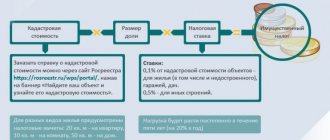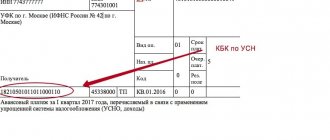Transport tax rates in Moscow
For a year
| Name of taxable object | Rate (RUB) for 2021 |
| Passenger cars | |
| up to 100 hp (up to 73.55 kW) inclusive | 12 |
| over 100 hp up to 125 hp (over 73.55 kW to 91.94 kW) inclusive | 25 |
| over 125 hp up to 150 hp (over 91.94 kW to 110.33 kW) inclusive | 35 |
| over 150 hp up to 175 hp (over 110.33 kW to 128.7 kW) inclusive | 45 |
| over 175 hp up to 200 hp (over 128.7 kW to 147.1 kW) inclusive | 50 |
| over 200 hp up to 225 hp (over 147.1 kW to 165.5 kW) inclusive | 65 |
| over 225 hp up to 250 hp (over 165.5 kW to 183.9 kW) inclusive | 75 |
| over 250 hp (over 183.9 kW) | 150 |
| Motorcycles and scooters | |
| up to 20 hp (up to 14.7 kW) inclusive | 7 |
| over 20 hp up to 35 hp (over 14.7 kW to 25.74 kW) inclusive | 15 |
| over 35 hp (over 25.74 kW) | 50 |
| Buses | |
| up to 110 hp (up to 80.9 kW) inclusive | 15 |
| over 110 hp up to 200 hp (over 80.9 kW to 147.1 kW) inclusive | 26 |
| over 200 hp (over 147.1 kW) | 55 |
| Trucks | |
| up to 100 hp (up to 73.55 kW) inclusive | 15 |
| over 100 hp up to 150 hp (over 73.55 kW to 110.33 kW) inclusive | 26 |
| over 150 hp up to 200 hp (over 110.33 kW to 147.1 kW) inclusive | 38 |
| over 200 hp up to 250 hp (over 147.1 kW to 183.9 kW) inclusive | 55 |
| over 250 hp (over 183.9 kW) | 70 |
| Other self-propelled vehicles, pneumatic and tracked machines and mechanisms | 25 |
| Snowmobiles, motor sleighs | |
| up to 50 hp (up to 36.77 kW) inclusive | 25 |
| over 50 hp (over 36.77 kW) | 50 |
| Boats, motor boats and other water vehicles | |
| up to 100 hp (up to 73.55 kW) inclusive | 100 |
| over 100 hp (over 73.55 kW) | 200 |
| Yachts and other motor-sailing vessels | |
| up to 100 hp (up to 73.55 kW) inclusive | 200 |
| over 100 hp (over 73.55 kW) | 400 |
| Jet skis | |
| up to 100 hp (up to 73.55 kW) inclusive | 250 |
| over 100 hp (over 73.55 kW) | 500 |
| Non-self-propelled (towed) ships for which gross tonnage is determined (from each registered ton of gross tonnage) | 200 |
| Airplanes, helicopters and other aircraft with engines (per horsepower) | 250 |
| Airplanes with jet engines (per kilogram of thrust) | 200 |
| Other water and air vehicles without engines (per vehicle unit) | 2000 |
FILES
Note to the table: the values are given in Moscow for 2021, 2021, 2021, 2021, 2021, 2021. To select rates for a specific year, use the selector.
The capital of Russia is the largest subject of the Russian Federation in terms of the amount of collected transport tax. More than 27 billion rubles are brought in annually by 2.9 million payers, subject to the requirements of Moscow City Law No. 33 of July 9, 2008.
Who should pay transport tax
This tax is a mandatory regional tax. It is also paid by vehicle owners to the country's budget. Regarding the category of citizens who must pay, you can read in Article 357 of the Tax Code of Russia. Taxpayers, in accordance with the current law, are people for whom vehicles were registered in accordance with the legislation of our country.
This also includes motorcycles, cars, buses, scooters and other self-propelled mechanisms and tracked and pneumatic vehicles. We also need to add motor ships, airplanes, snowmobiles, yachts, jet skis, and so on to the list. Organizations must calculate not only the amount of tax, but also the amount of the advance payment themselves.
Tax calculation and payment deadlines for organizations
Most regions of Russia provide for the need to make advance payments for payers from among legal entities. In Moscow there is no such obligation - legal entities pay tax in full at the end of the year. The last date by which funds can be transferred to pay off obligations is February 5.
The enterprise calculates the amount independently, taking into account the following factors:
- bid;
- the tax base;
- the share in the right;
- increasing the coefficient;
- holding period (number of months/12);
- benefit provided.
Payment is made without taking into account fractional shares of the ruble, using mathematical rounding rules.
Deadline for payment of transport tax for legal entities in 2021:
- for 2021 - no later than February 5, 2021
- for 2021 - no later than February 5, 2022
How is transport tax calculated?
First of all, it should be noted that the transport tax is a regional tax and in each region its value for different categories of transport can differ quite significantly.
The main parameter influencing the amount of the tax is engine power; it is not for nothing that this tax is popularly called the horsepower tax.
The formula for calculating the tax is simply the engine power multiplied by the appropriate coefficient. In some regional coefficients, the values differ for vehicles of different ages. See odds table below
250 horsepower
– this is the number of hp. after which the price almost doubles.
Calculate tax for other modes of transport
- for cars
- for motorcycles
- for buses
- for truck
- for snowmobiles
- for boats
- for yachts
- for jet skis
- for aircraft
- for jet aircraft
How to determine engine power?
The taxable base for calculating the tax in most cases is the engine power in horsepower (hp). It is usually indicated on the vehicle title or registration certificate.
In situations where a vehicle has two engines, regulatory authorities recommend that when determining the transport tax base for self-propelled vehicles and other types of equipment, use the engine power (the total rated power of all engines) reflected in the title and information provided by the registration authorities (see Letter Federal Tax Service of Russia dated September 11, 2017 No. BS-4-21/18026 (together with Letter of the Ministry of Finance of Russia dated September 11, 2017 No. 03-05-04-04/58058)).
In practice, the question arises of how to determine the taxable base for transport tax if the power is not indicated in hp. s., and in kW.
In paragraph 19 of the previously existing Methodological Recommendations for the application of Ch. 28 of the Tax Code of the Russian Federation stated that if in the technical documentation for a vehicle the engine power is indicated in metric power units (kW), then the corresponding conversion into non-system power units (horsepower) is carried out by multiplying the engine power, expressed in kW, by a factor equal to 1, 35962 (conversion factor – 1 kW = 1.35962 hp).
In this case, when converting into non-system power units (horsepower), rounding is carried out accurate to the second decimal place. For example, a watercraft (boat) has a metric engine power of 155.0 kW, and an engine horsepower of 210.74 hp. With. (155 kW x 1.35962 hp).
Let us note that these recommendations no longer apply in 2021 and today the mention of this conversion coefficient remains only in clause 5 of Appendix 2 of the Directive of the Central Bank of the Russian Federation dated December 4, 2021 No. 5000-U, however, we believe that it is legal to use this coefficient today, since it was taken from a reference book of physical quantities.
The procedure for calculating the amount of tax and the amount of advance tax payments
Taxpayer organizations calculate the amount of tax and the amount of advance payment for tax independently (clause 1 of Article 362 of the Tax Code of the Russian Federation).
According to clause 2 of this article, the amount of tax ( TN ) payable to the budget at the end of the tax period is calculated for each vehicle as the product of the corresponding tax base ( NB ) and tax rate ( TS ) (unless otherwise provided by this article):
TN = NB x NS.
The tax amount is determined as the difference between the calculated tax amount ( TN ) and the amounts of advance tax payments ( AP ) payable during the tax period (if the laws of the constituent entities of the Russian Federation establish reporting periods):
TN = NB x NS – AP.
How the advance payment for transport tax is calculated at the end of each reporting period is stated in clause 2.1 of Art. 362 Tax Code of the Russian Federation. It is equal to 1/4 of the product of the corresponding tax base and the tax rate, taking into account the increasing coefficient ( K p ) specified in paragraph 2 of this article:
AP = 1/4 x TN.
At the same time, the legislative (representative) body of a subject of the Russian Federation, when establishing a tax, has the right to provide for certain categories of taxpayers the right not to calculate and not pay advance tax payments during the tax period (clause 6 of Article 362 of the Tax Code of the Russian Federation).
If the organization has a car worth more than 3 million rubles.
In relation to expensive passenger cars (worth over 3 million rubles), the transport tax is calculated taking into account the increasing coefficient ( K p ) established by clause 2 of Art. 362 Tax Code of the Russian Federation. The coefficient depends on the cost of the car and the period elapsed from the year of manufacture (in this case, the calculation of terms begins from the year of manufacture of the vehicle):
| Average cost of a car | Number of years since the year of issue | Increasing factor |
| From 3 million to 5 million rubles. inclusive | No more than 3 years | 1,1 |
| From 5 million to 10 million rubles. inclusive | No more than 5 years | 2 |
| From 10 million to 15 million rubles. inclusive | No more than 10 years | 3 |
| From 15 million rubles. | No more than 15 years | 3 |
The procedure for calculating the average cost of passenger cars for the purposes of Ch. 28 of the Tax Code of the Russian Federation was approved by Order of the Ministry of Industry and Trade of Russia dated February 28, 2014 No. 316. The list of passenger cars with an average cost of 3 million rubles, subject to application in the next tax period, is posted no later than March 1 of the next tax period on the website of the Ministry of Industry and Trade.
So, for the specified vehicles, tax and advance payments are calculated as follows:
- TN = NB x NS x Kp – tax based on the results of the tax period;
- AP = 1/4 x TN x Kp – advance payments based on the results of the reporting period.
If the vehicle is registered (deregistered) during the tax (reporting) period
According to paragraph 3 of Art. 362 of the Tax Code of the Russian Federation in the case of registration of a vehicle and (or) deregistration of a vehicle (deregistration, exclusion from the state ship register, etc.) during the tax (reporting) period, the calculation of the amount of tax (the amount of the advance payment for tax) is carried out from taking into account the coefficient ( K in ).
This coefficient is defined as the ratio of the number of full months during which the vehicle was registered to the taxpayer to the number of calendar months in the tax (reporting) period.
To determine whether the month in which the vehicle was registered or, conversely, it was deregistered is included, the so-called 15th rule is applied:
| Vehicle registration | Until the 15th day of the corresponding month inclusive | Month of registration = full month |
| After the 15th of the corresponding month | The month of registration is not taken into account | |
| Removing a vehicle from registration | Until the 15th day of the corresponding month inclusive | The month of deregistration is not taken into account |
| After the 15th of the corresponding month | Month of deregistration = full month |
In this case, the value of the coefficient is indicated in the form of a decimal fraction accurate to the fourth decimal place (clause 5.5 of the Procedure for filling out a tax return for transport tax, approved by Order of the Federal Tax Service of the Russian Federation dated December 5, 2016 No. ММВ-7-21 / [email protected] ).
Example.
The organization purchased a truck with an engine power of 240 hp. With. The vehicle was registered on February 14.
The law of a constituent entity of the Russian Federation sets the tax rate for trucks with an engine power (per horsepower) over 200 hp. With. up to 250 l. With. set at 65 rubles/l. With. and reporting periods for transport tax are provided.
The Kv coefficient for this vehicle will be:
- in the first quarter – 0.6667 (2 months / 3 months);
- at the end of the year – 0.9167 (11 months / 12 months).
Advance payments:
- for the first quarter – 2,600 rubles. (1/4 x 240 hp x 65 RUR/hp x 0.6667);
- for the second quarter – 3,900 rubles. (1/4 x 240 hp x 65 RUR/hp);
- for the third quarter – 3,900 rubles. (1/4 x 240 hp x 65 RUR/hp);
- per year – 14,300 rubles. (240 hp x 65 rub./hp x 0.9167).
Rules and deadlines for paying taxes for individuals
Residents of the Moscow region may not calculate the tax amount themselves. It is enough to wait for the tax notification from the Federal Tax Service. This document represents a breakdown of charges for each vehicle owned by the payer in the past year.
You can check the correctness of the specified information using the multiplication formula with the same factors that were listed for legal entities.
The tax payment deadline for citizens is December 1. If funds are not credited on time, penalties will be charged on the entire amount daily.
Deadline for payment of transport tax for individuals in 2021:
- for 2021 - no later than December 1, 2021
- for 2021 - no later than December 1, 2022
Please take into account: in accordance with paragraph 7 of Art. 6.1. Tax Code of the Russian Federation, if the last day of the period falls on a weekend, then the day of expiration of the period is considered to be the next working day following it.
Deadlines for payment of transport tax
Taxpayers pay car tax to the budget at the location of the vehicles.
taxpayers-organizations pay advance tax payments calculated at the end of each reporting period in the amount of one-fourth of the product of the corresponding tax base, tax rate and tax benefits.
The deadlines for paying advance payments and the deadlines for paying the tax amount based on the results of the reporting period are established by the relevant law of the constituent entity of the Russian Federation, but in any case, the deadline for paying the tax calculated based on the results of the tax period cannot be earlier than February 1 of the year following the expired tax period.
Taxpayers who are individuals pay transport tax on the basis of a tax notice sent by the tax authority. Starting from 2021, individuals must pay transport tax no later than December 1 of the year following the expired tax period (previously, the deadline for paying transport tax was October). That is, the transport tax for 2021 must be paid by citizens no later than December 1, 2021 at the rates established for 2021, for 2021 - before December 1, 2021, for 2021 - before December 1, 2019.
Benefits for individuals
Citizens registered in Moscow also have the right to receive preferential conditions for paying transport tax, subject to belonging to the following groups:
- Heroes of the USSR, Russian Federation, full holders of the Order of Glory;
- veterans;
- disabled people of I, II disability groups;
- former minor prisoners of the fascist regime;
- guardians in large families or families with a disabled child (one parent can take advantage of the benefit);
- citizens whose health was damaged as a result of exposure to radiation during the Chernobyl accident, at the Mayak production facility, as well as during nuclear weapons testing in Semipalatinsk.
FILESOpen the table of transport tax benefits in Moscow
Transport tax benefits for individuals in 2021
Fortunately, in Russia there is at least a system of transport tax benefits in 2021 for individuals, for pensioners and other benefit categories, the benefit is established not by the federal government, but by the regional ones, so each region has its own list of beneficiaries and the size of the benefit itself.
By the way, the amount of tax, such as the cost of an MTPL policy, also depends on the region in which the car is registered, which is why the amount of tax varies noticeably from region to region.









